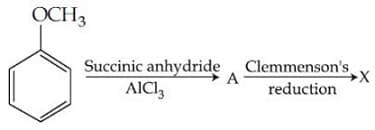EASY
Earn 100
Why does Beryllium not react with water?
Important Questions on The s-Block Elements
EASY
EASY
Match list-I with list-II :
| (a) | (i) | Treatment of cancer | |
| (b) | (ii) | Extraction of metals | |
| (c) | (iii) | Incendiary bombs and signals | |
| (d) | (iv) | Windows of X-ray tubes | |
| (v) | Bearings for motor engines. |
Choose the most appropriate answer, the option given below :
EASY
HARD

X is :
EASY
EASY
EASY
Match List with List
| List | List | ||
| (a) | (i) | Antacid | |
| (b) | (ii) | Cement | |
| (c) | (iii) | Bleach | |
| (d) | (iv) | Plaster of paris |
Choose the most appropriate answer from the
EASY
EASY
EASY
EASY
EASY
EASY
MEDIUM

Then A, B and C will be
EASY
MEDIUM
EASY
The chemical which is used for plastering the broken bones is
MEDIUM
Which of the following elements would yield an acidic oxide?
MEDIUM
MEDIUM

